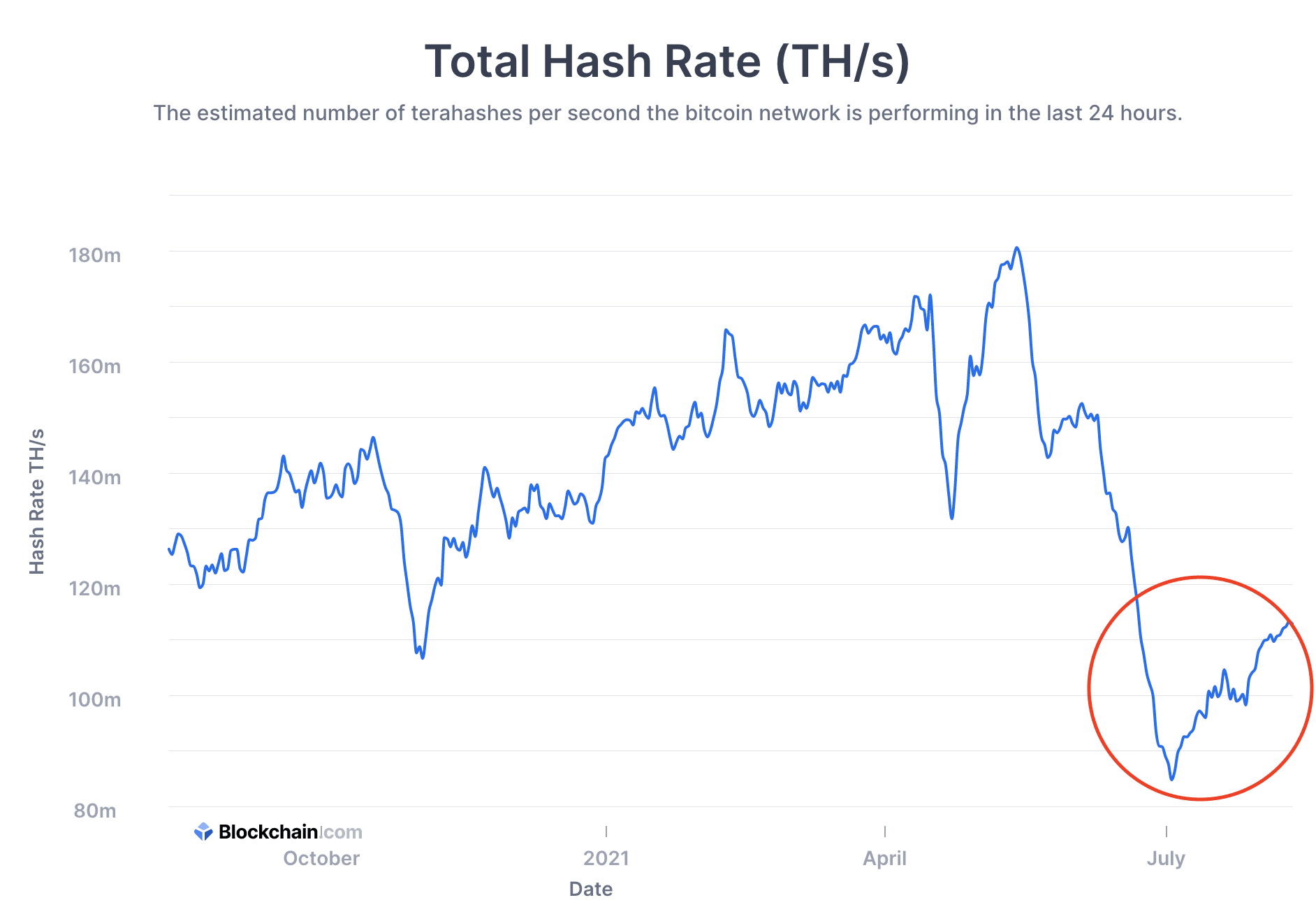As of 2021-08-14, it is becoming more and more difficult to mine Bitcoin, and profits are getting lower and lower.
Every 2016 blocks, or about every two weeks, Bitcoin resets the difficulty of mining by miners. On Friday morning, as expected, the Bitcoin code automatically increased the difficulty of solving a block by approximately 7.3%.
Historically, this soaring of difficulty is relatively large, but it is not surprising and not worrying. But this marks the first significant increase since China’s mining ban took effect, and confirms a trend we already know: some miners who were once in China are looking for new homes elsewhere.
Although minting Bitcoin may not be as profitable as before the algorithm self-corrected, miners continue to make more money now than before China cracked down on cryptocurrencies in May.
"The level of computing power is still 42.1% lower than the peak in May 2021 when China's population exodus occurred," said Jason Deane, an analyst at crypto consulting firm Quantum Economics. A computing deficit means that those who are now plugged into the Bitcoin network are making money.
Back online
When China expelled all miners this spring, more than half of the computing power in the Bitcoin network went black. Miners in other parts of the world have to clean up the mess. Fewer people and less computing power means that it takes longer to verify transactions and mint new bitcoins.
Therefore, just like clockwork, the Bitcoin algorithm will self-correct for this deviation from the norm, and in July, the difficulty level of the network has dropped by an unprecedented 28%. Suddenly, it became easier to create new bitcoins, and World Mining Group went back to solving the problem of transaction blocks in an average of 10 minutes.
This feature of Bitcoin code is a key part of its network architecture.
This spring, the entire country-which accounts for 54% of Bitcoin's total computing power-went offline, and Bitcoin did not miss a beat.
"The Bitcoin network does not have any downtime. This is actually the smartest part of the Bitcoin software: difficulty adjustment," said Brandon Arvanaghi, a Bitcoin mining engineer.
The whole incident is considered a "black swan" incident in the industry, and according to crypto miner Alejandro de la Torre, it also made many people richer.
Now, with the new adjustment, Dean told CNBC that the profit of mining bitcoin after the upgrade has basically been reduced by 7.3%.
"Assuming your energy costs and computing power remain the same, then the calculations are indeed as simple as they seem," Dean said.
The difficulty adjustment also reflects the fact that the mining world has bottomed out in terms of global computing power. Since the end of June, the miners have been quickly resuming online.

Mike Colyer, CEO of the digital currency company Foundry, said: "We have seen the bottom of the decline in computing power, and it's only starting here." The company helped bring more than $300 million in mining equipment To North America.
“The next adjustment reflects the fact that miners are expanding production capacity and installing new machines. A large number of machines from China need to find new homes,” Colyer continued.
Rebuilding the Bitcoin network
Some of the machines that have come back online are the same as those that have been plugged in across China.
"Most of these people cannot move to the U.S. because of financial constraints, because they don't speak any English, and they have never left the Sichuan area in their lifetime... All they did was sell all the machines," the Singapore-based mining pool. De La Torre, Vice President of Poolin explained.
"There has been a series of activities when these machines are sold globally," he said.
However, many of the online ASICs are produced directly from the production lines of the largest manufacturers on the planet (such as Bitmain and Whatsminer). These newer rigs are more efficient, and Colyer said they can get roughly twice the computing power with the same amount of power.
In fact, many people in the mining industry predict that most of the older generation equipment will never be back online, which means that the entire network will become more efficient-and will lead to more competition among miners.
Whit Gibbs, CEO and founder of Bitcoin mining service provider Compass, said: "Newer machines have much higher computing power than their predecessors, so we are likely to see computing power in the next 12 months. At some point in time, it continues to return to record highs."
According to Dean, several of the new machines are currently being shipped to buyers. Some larger players have tens of thousands of new ASIC orders, and these new ASICs will be online in the next 12 months.
"This means that during the same period, the difficulty will continue to increase steadily, and it may be quite significant," Dean said.
At the same time, Colyer said that from now on, it is expected that the monthly difficulty adjustment will exceed 10%. He believes that it will take nine to twelve months to double the difficulty.



Post comment 取消回复